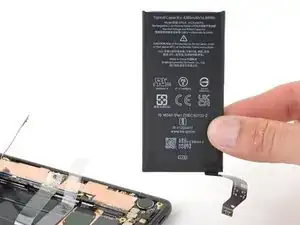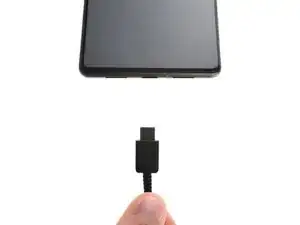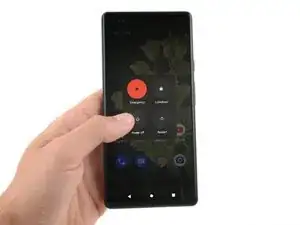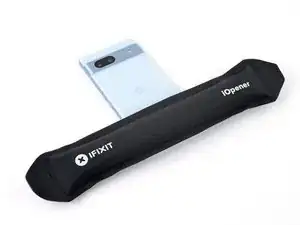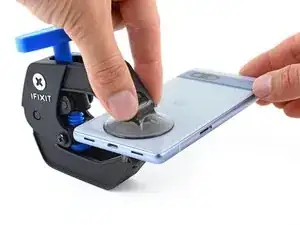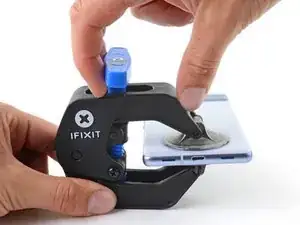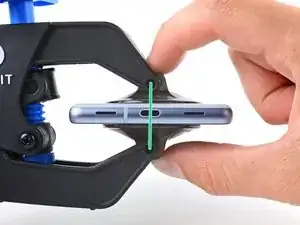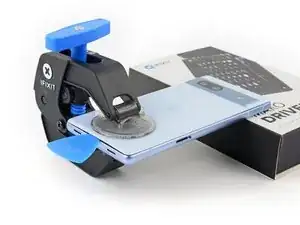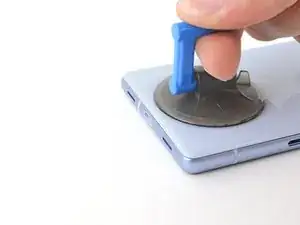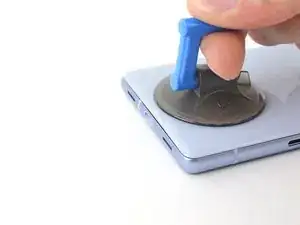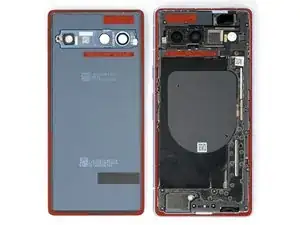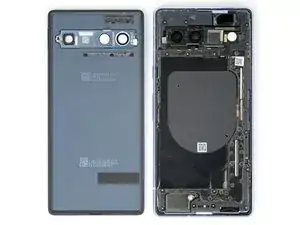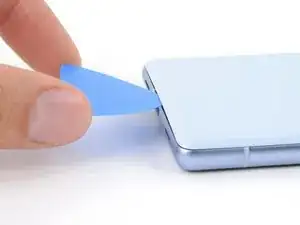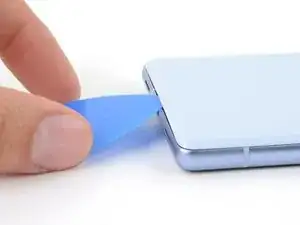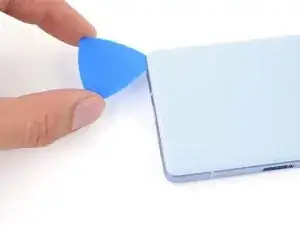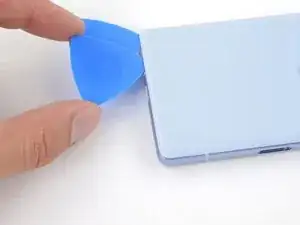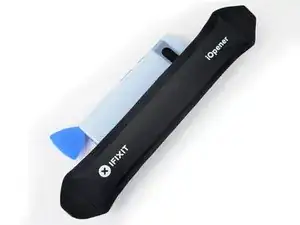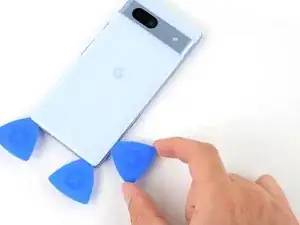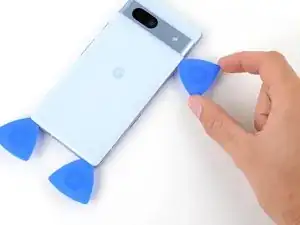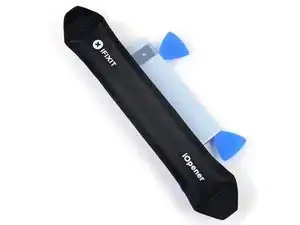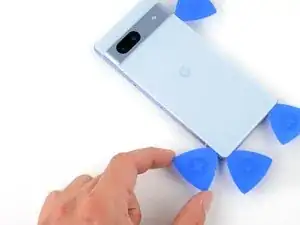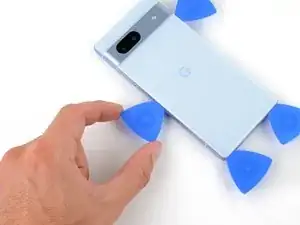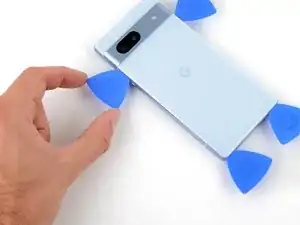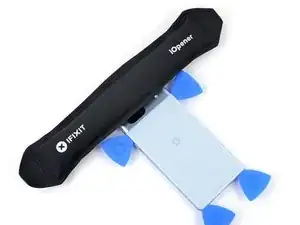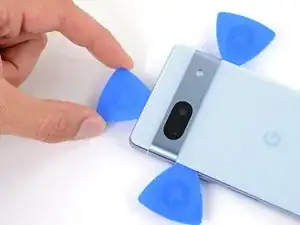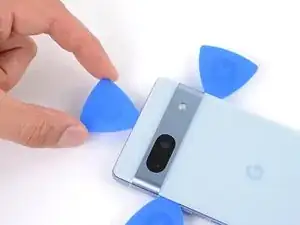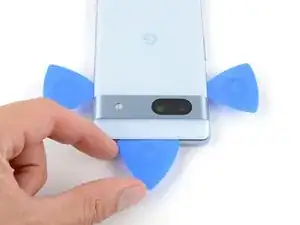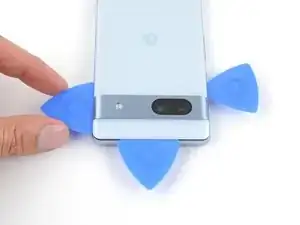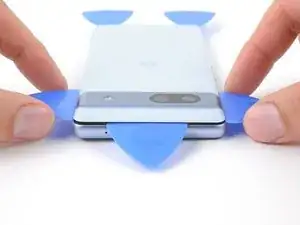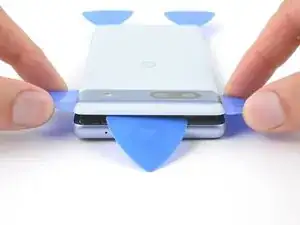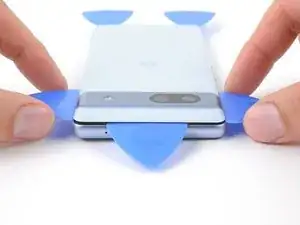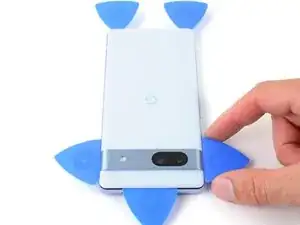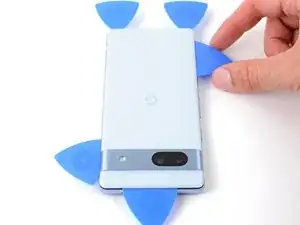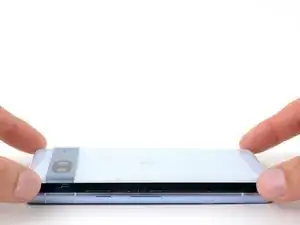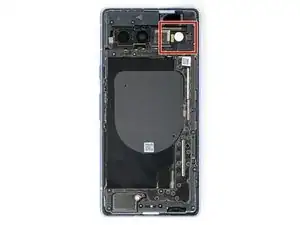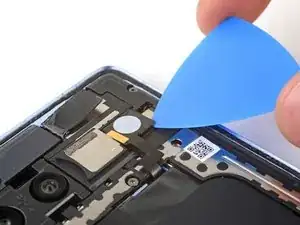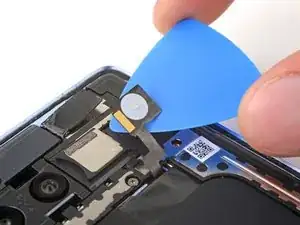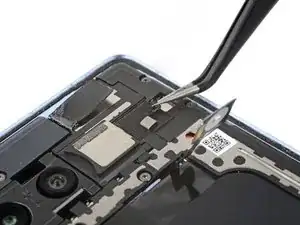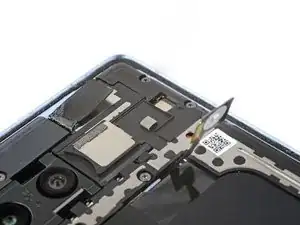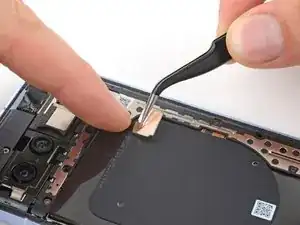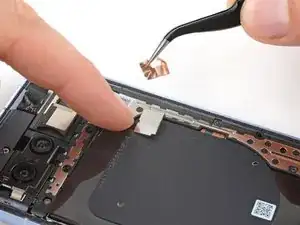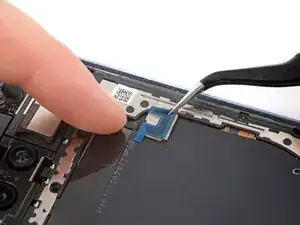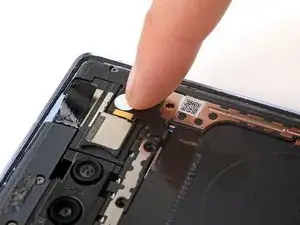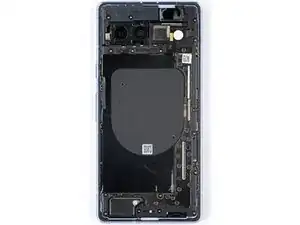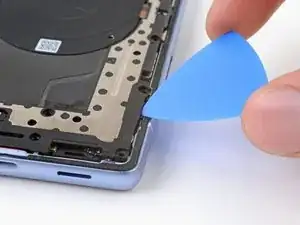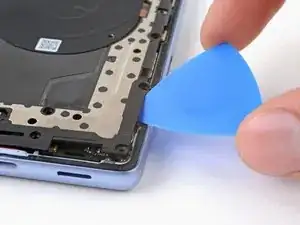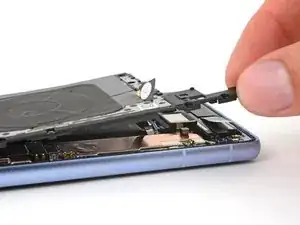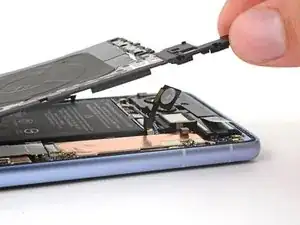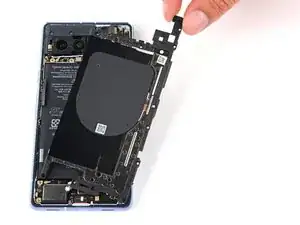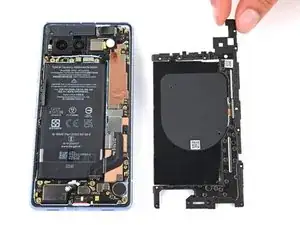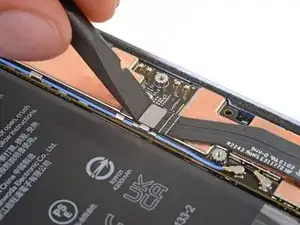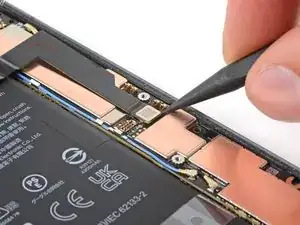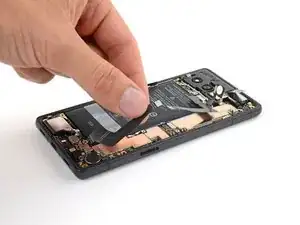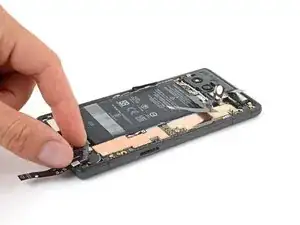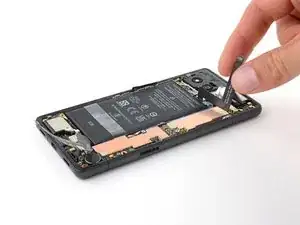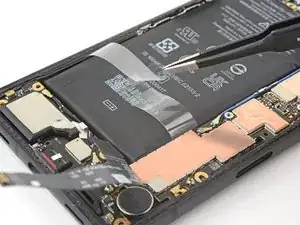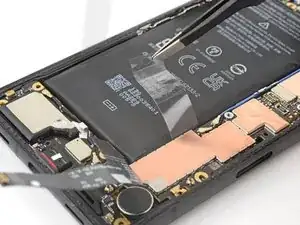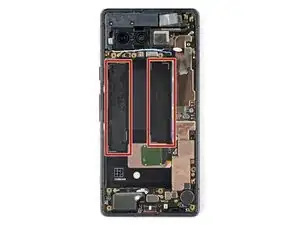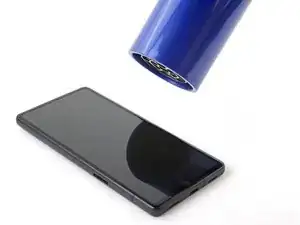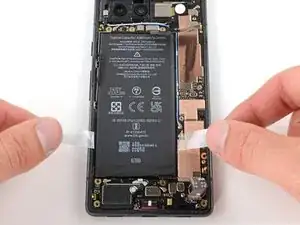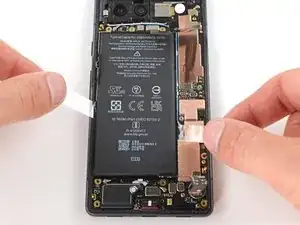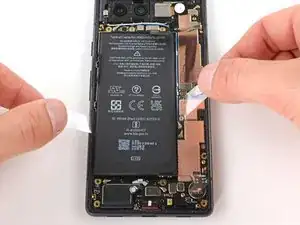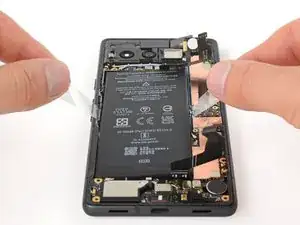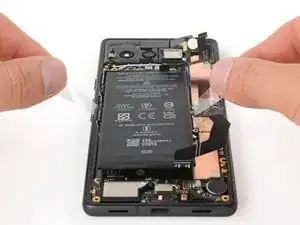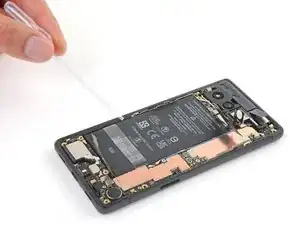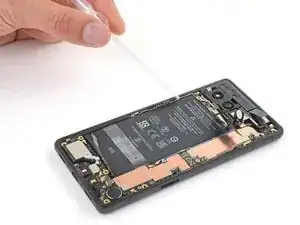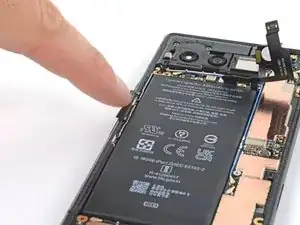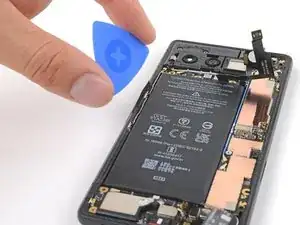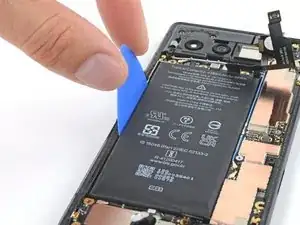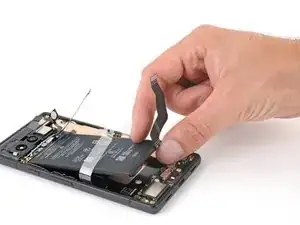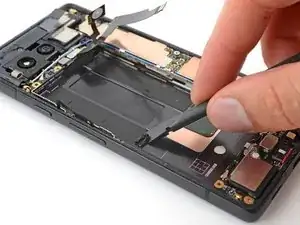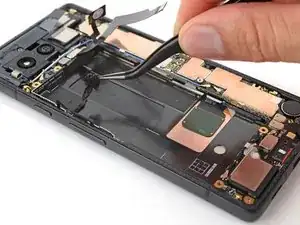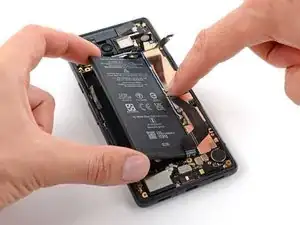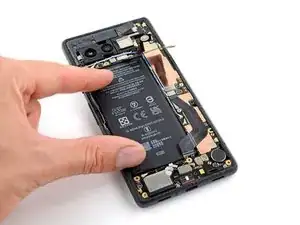Introduction
This repair guide was authored by the iFixit staff and hasn’t been endorsed by Google. Learn more about our repair guides here.
Follow this guide to remove or replace the battery in your Google Pixel 7a.
Lithium-ion batteries have a limited lifespan. If your phone doesn't hold a charge or dies unexpectedly, it might be time to replace the battery.
Note: This guide uses the Verizon model Google Pixel 7a (G0DZQ), which has a 5G mmWave antenna. If you have a different carrier model, some photos in this guide differ, but the procedure is the same.
If your battery is swollen, take appropriate precautions.
You'll need replacement adhesive in order to complete this repair.
Note: Any repair can compromise the water resistance of your phone. Retaining water resistance after the repair will depend on how well you reapply the adhesive.
Tools
Parts
-
-
Pull the blue handle backward to unlock the Anti-Clamp's arms.
-
Slide the arms over the bottom edge of the phone, with one suction cup on the rear cover and one on the screen.
-
Squeeze the cups together to create suction.
-
-
-
Pull the blue handle forward to lock the arms.
-
Turn the handle clockwise one full turn (360 degrees), or until the suction cups begin to stretch.
-
As the cups stretch, make sure they stay aligned with each other. If they keep slipping, remove the Anti-Clamp and apply tape for the cups to stick to.
-
-
-
Place an object under your phone so it rests level while between the Anti-Clamp's arms.
-
Wait one minute, or until the adhesive separates, for a gap to form along the bottom edge of the phone.
-
Insert an opening pick into the gap between the rear cover and the frame.
-
Remove the suction cups from the phone using their pull-tabs and set the Anti-Clamp aside.
-
-
-
Apply a suction handle to the center of the bottom edge of the rear cover.
-
Pull up on the suction handle with a strong, steady force until a gap forms between the rear cover and frame.
-
Insert the tip of an opening pick into the gap.
-
Remove the suction handle.
-
-
-
The rear cover is secured with adhesive around the perimeter of the frame and near the cameras. Use this picture as a reference while you slice the adhesive.
-
-
-
Angle the opening pick upward so the tip faces away from the frame.
-
Slide your pick to the bottom left corner of the rear cover.
-
Leave this pick in place to prevent the adhesive from resealing.
-
-
-
Insert a second opening pick in the bottom left corner.
-
Slide the new pick to the bottom right corner of the rear cover to separate the bottom edge adhesive.
-
Leave this pick in place to prevent the adhesive from resealing.
-
-
-
Insert a third opening pick in the bottom right corner of the rear cover.
-
Slide your pick up the right edge of the rear cover to separate its adhesive. Stop when you reach the camera bar.
-
Leave this pick in place to prevent the adhesive from resealing.
-
-
-
Insert a fourth opening pick in the bottom left corner of the rear cover.
-
Slide your pick up the left edge of the rear cover to separate the adhesive. Stop when you reach the camera bar.
-
Leave this pick in place to prevent the adhesive from resealing.
-
-
-
Insert a fifth opening pick in the top left corner of the rear cover between 8 mm and 10 mm (0.3–0.4 in) deep, or just over halfway between the tip of the pick and the iFixit logo.
-
Slide your pick halfway across the top edge to separate the antenna bracket adhesive. Stop at the halfway point along the top edge.
-
-
-
Pull your opening pick out to a depth of 3 mm.
-
Slide your pick to the top right corner to slice the rest of the top edge adhesive.
-
-
-
Roll the top edge pick so its flat edge is under the rear cover.
-
Roll the picks on each side of the camera bar so their flat edges are under the camera bar.
-
-
-
Use the opening picks under the camera bar to pry the top edge of the rear cover from the frame.
-
Pry back and forth until the camera bar loosens.
-
-
-
Slide the opening picks from the camera bar down the long edges of the rear cover to separate any adhesive that may have resealed.
-
-
-
Remove the rear cover.
-
Now is a good time to test your phone before sealing it up. Power it on and check that it works. Power it back down before you continue reassembly.
-
Follow this guide to apply new adhesive and install your rear cover.
-
-
-
Apply a heated iOpener to the flash unit for one minute to soften the adhesive securing it to the logic board cover.
-
-
-
Slide your pick under the right edge of the flash to separate the adhesive securing it to the cover.
-
-
-
If the copper tape lifted away with the flash, use tweezers or your fingers to remove the black foam residue from the logic board cover.
-
-
-
Apply a heated iOpener to the underside of the flash for one minute.
-
Hold the neck of the flash cable steady and use tweezers to peel and remove the copper tape from the flash unit.
-
-
-
Make sure the small foam spacer is still in the middle of the flash recess in the logic board cover. If not, stick it back to the middle.
-
Peel the copper tape from the large adhesive liner.
-
Place the copper tape face-down onto the flash, with the cutout toward the neck of the cable.
-
Remove the blue liner to expose the adhesive.
-
Press the flash into place.
-
-
-
Use a T3 Torx driver to remove the thirteen 4.3 mm 3IP Torx Plus screws securing the logic board cover.
-
Use a T2 Torx driver to remove the 1.5 mm 1IP Torx Plus screw securing the right edge of the cover.
-
-
-
Insert an opening pick between the bottom right corner of the logic board cover and the frame.
-
Pry up to release the clip securing the cover.
-
-
-
Use your T2 Torx driver to remove the 1.5 mm 1IP Torx Plus screw securing the connector cover.
-
Use tweezers or your fingers to remove the cover.
-
-
-
Insert the flat end of a spudger under the top edge of the battery press connector.
-
Pry straight up to disconnect the battery press connector.
-
-
-
Verizon models: Use the point of your spudger to pry up and disconnect the 5G mmWave press connector.
-
-
-
Move the battery cable toward the bottom of the phone, out of the way of the battery.
-
Verizon models: Move the 5G mmWave cable toward the top of the phone.
-
-
-
Two strips of adhesive secure the upper half of the battery. The battery jacket is just below these strips.
-
Flip the phone over and use a hair dryer, heat gun, or hot plate to evenly heat the screen until the entire frame is warm to the touch.
-
-
-
Firmly grip both sides of the battery jacket. Hold them at a low angle, but up high enough so they don't snag on any logic board components or the frame.
-
Slide each end of the jacket toward the top of the battery in a sawing motion to cut through the bottom portion of adhesive.
-
Stop sawing when the jacket reaches halfway up the battery.
-
-
-
Firmly pull up on each end of the battery jacket for one minute to slowly allow the adhesive to loosen.
-
-
-
Fill a pipette or syringe with highly-concentrated isopropyl alcohol (over 90%).
-
Apply a few drops of isopropyl alcohol between the left edge of the battery and the frame.
-
Wait one minute for the adhesive to soften.
-
-
-
Move the side button tab to the left, away from the battery.
-
Insert the flat end of an opening pick between the left edge of the battery and the frame.
-
-
-
Firmly bend the opening pick away from the battery. Keep steady pressure on the pick for one minute.
-
Once the adhesive begins to separate, slide your pick deeper under the battery and continue prying it up.
-
-
-
Use the flat end of your spudger to scrape an edge of the old adhesive into a ball large enough to grip with a pair of tweezers.
-
Use tweezers or your fingers to peel and remove the old adhesive from the frame.
-
If any residue remains, apply a few drops of highly-concentrated isopropyl alcohol (over 90%) to the frame and wipe it with a lint-free or microfiber cloth.
-
-
-
Peel the two strips of battery adhesive from their large liner.
-
Apply the short strip of adhesive to the right side of the battery recess, using the white lines on the frame to position it.
-
Apply the long strip of adhesive to the left side of the recess.
-
Remove the blue liners from the adhesive strips.
-
-
-
While holding the battery just above its recess in the frame, reconnect its cable.
-
Press the battery into place.
-
Disconnect the battery.
-
To reassemble your device, follow these instructions in reverse order, starting from this step.
Calibrate your newly installed battery after completing this guide.
To run a diagnostics test with the built-in Pixel Diagnostic tool, click here.
Take your e-waste to an R2 or e-Stewards certified recycler.
Repair didn’t go as planned? Try some basic troubleshooting, or ask our Answers community for help.
